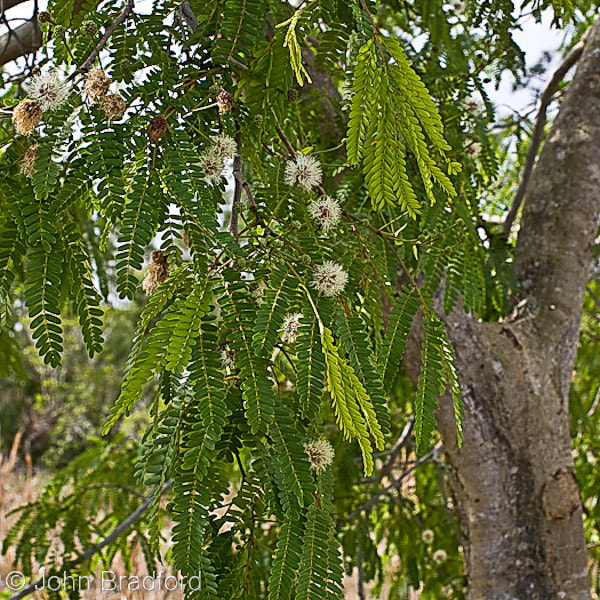Wild Tamarind
Lysiloma latisiliquum
Lysiloma latisiliquum
|
This is a medium to large-sized tree capable of growing to 60 feet tall but more commonly it is seldom more than 45 feet tall. The more vigorous shoots on saplings are strictly vegetative and largely un-branched. As the tree develops there is a progressive
increase in branch frequencies and a decrease in shoot lengths. Although fast growing, it has a strong wood, capable of withstanding harsh winds. The wood has growth rings, but these seem to be non-annual. The dark brown timber is highly regarded for lumber. The bark is smooth and light gray when the tree is young. It turns dark brown and separate into large plate-like scales on older trees. Young branches are bright reddish-brown but become a little paler with age. Stems are zigzag with fern-like bipinnate leaves. The crown is built of long arching overlapping branches. In open situations, this tree develops a short trunk that is erect to slightly leaning and a spreading “umbrella-like” crown. The crown becomes more open with age. In crowded competing situations, the trunk is straighter and longer to the first branch and the crown more conical. The trunks of the oldest trees are two to three feet in diameter. The tree is evergreen southward to semi-deciduous and deciduous northward. In all climates, leaf fall usually precedes new growth in late spring but often with some overlap. LEE COUNTY EXTENSION |

